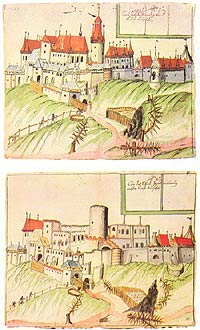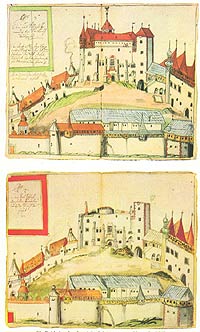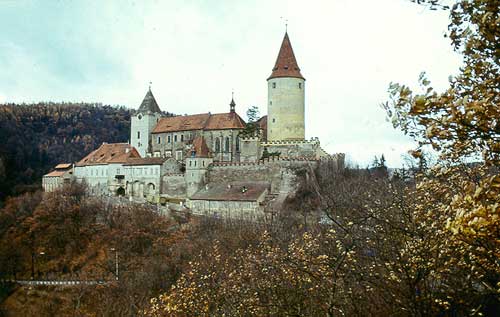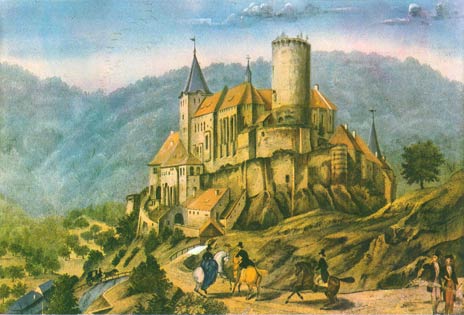|
Between the 13th. and 17th. centuries Křivoklāt
was the centre of a forested Royal castle complex in the river Bernouka
region. Křivoklāt was documented for the first time in 1110 in
the Cosmos Chronicle under its original name Hradek.
In the 12th. and 13th. centuries Křivoklāt became part of the nearby
Zbetschno court hunting grounds. Work on the significant royal castle in
its present form probably began around 1230 towards the end of the
reign of Prmysl Otokkars I or in the first years of the reign of his
successor Wenzel I. The consecration of the castle chapel in 1287
marks the completion of construction work on the catellum novum as the
castle is named in documents of the time. In the first half of the
13th.century Křivoklāt is one of a group of stone castles which
replaced obsolete early medieval castle walls.
In the second half of the 13th.century Prmysl Ottokar II promoted
Krivoklat to one of the preferred castle residences of the Bohemian kings.
The young king Karl IV was educated here in 1316 and from
1319-1323.
In 1423 Křivoklāt was pledged to Alesch Holicky von Sternberg.
However in 1454 the castle was returned again to the crown. From
1526 the rulers of the house of Habsburg often used the castle during
the hunting season.
Between 1559 and 1564 the imperial governor Archduke
Ferdinand von Tirol , who had secretly married Philippine Welser, found
refuge in the castle.
Křivoklāt was also used as a state prison and between 1548 and
1564 Jan Augusta, Bishop of the Bohemian Unified Brethren and in
1591 Edward Kelly the court alchemist were imprisoned here.
 |
 |
| Before and after the
fire of 1643 |
In 1686 Ernst Josef von
Wallenstein purchased the castle and the sovereignty of Křivoklát.
His granddaughter Maria Anna brought the castle as a dowry into her
marriage with Josef Wilhelm von Fürstenberg.
Up until 1929 the castle remained
the property of the Fürstenberg family who finally sold the complex to the
Czech-Slovakian state who then installed a museum. |



